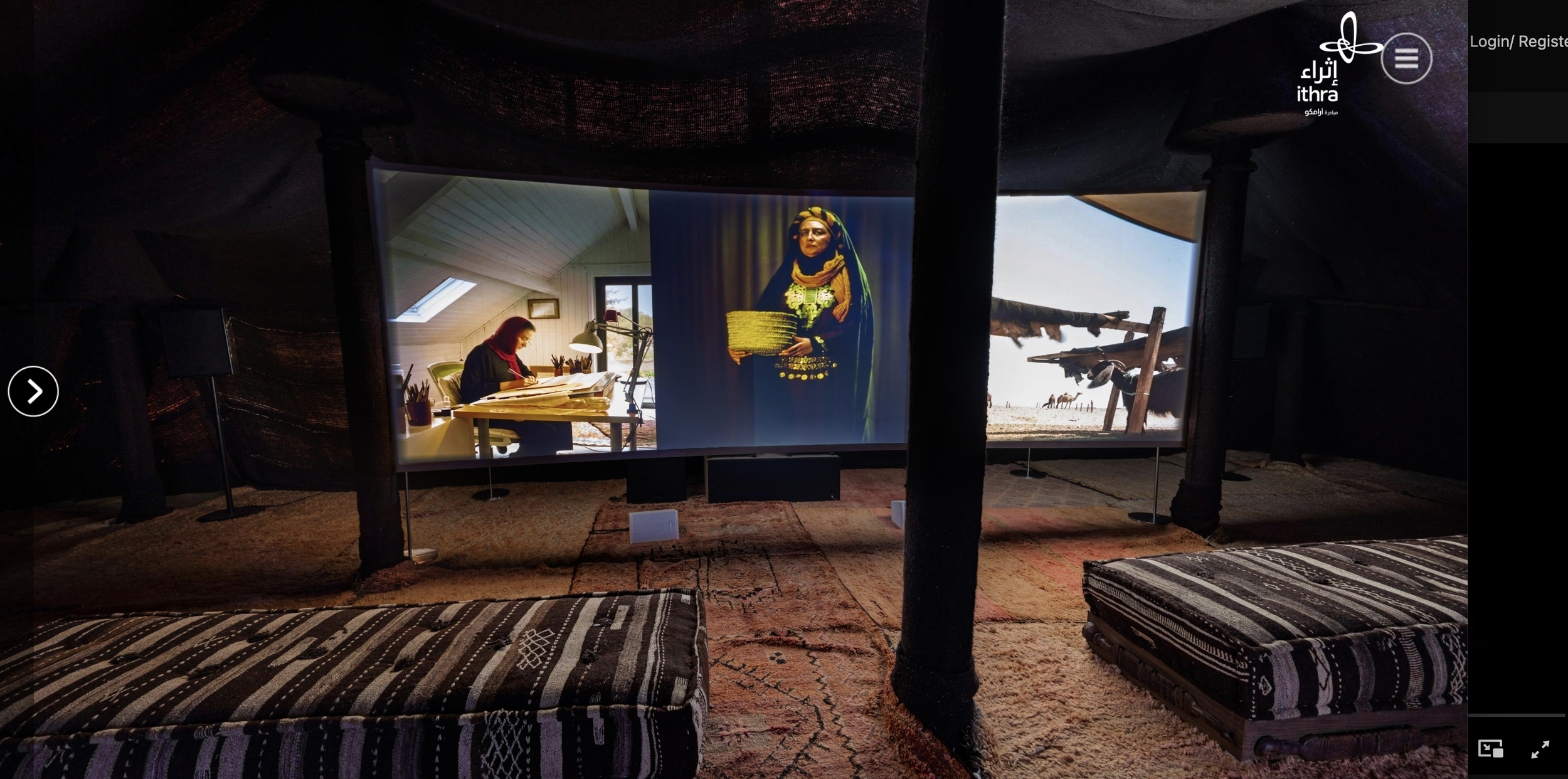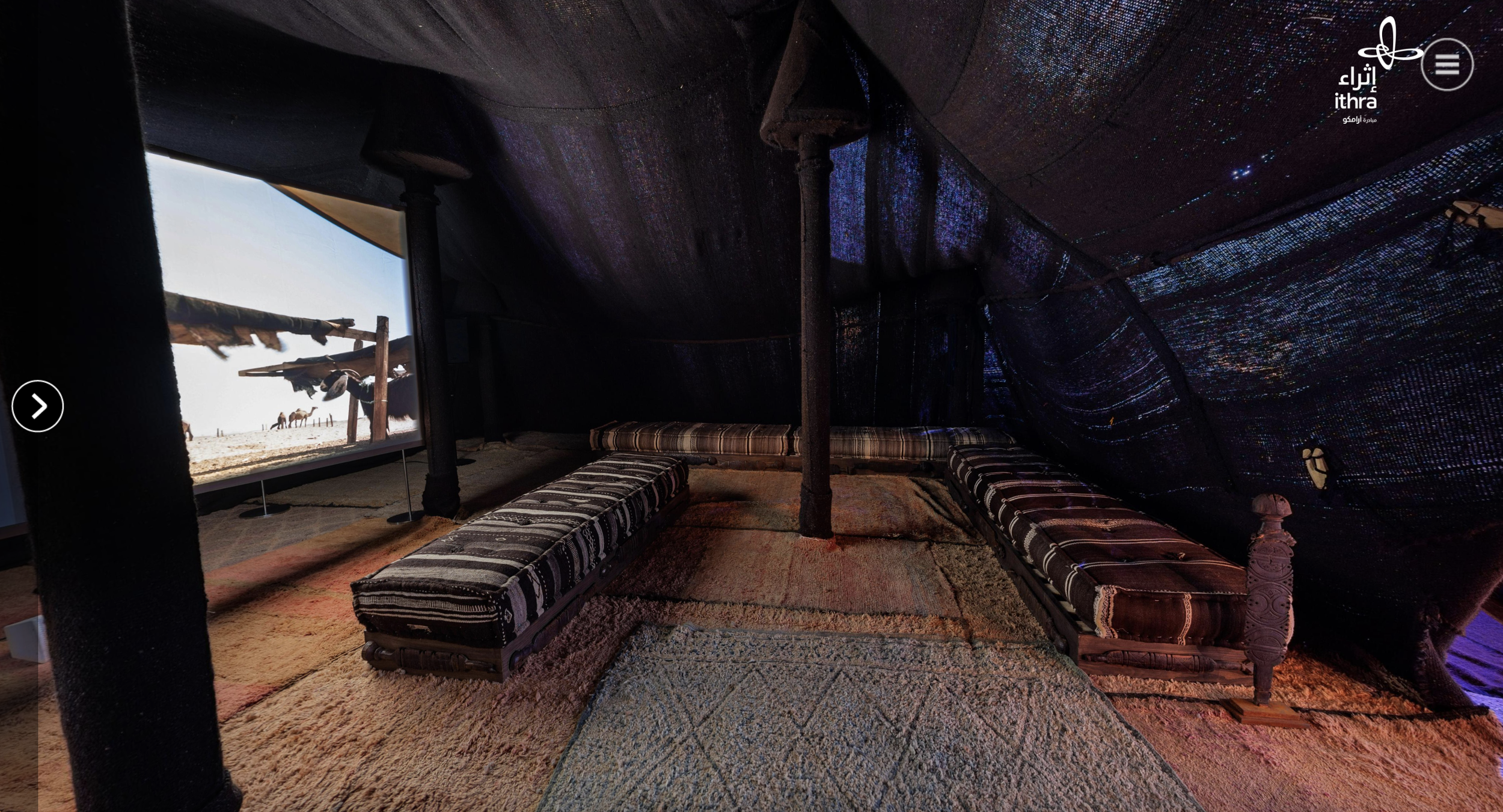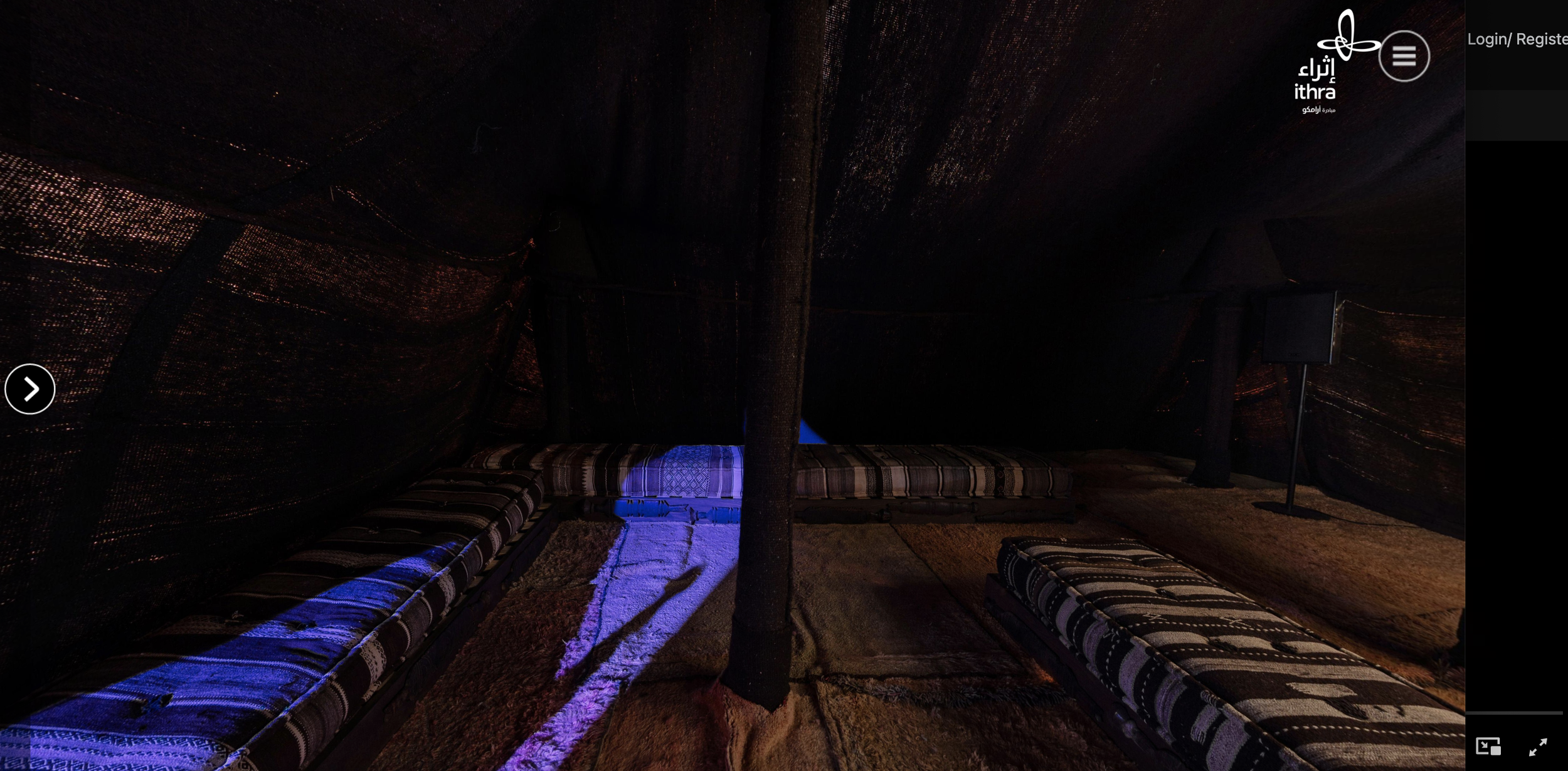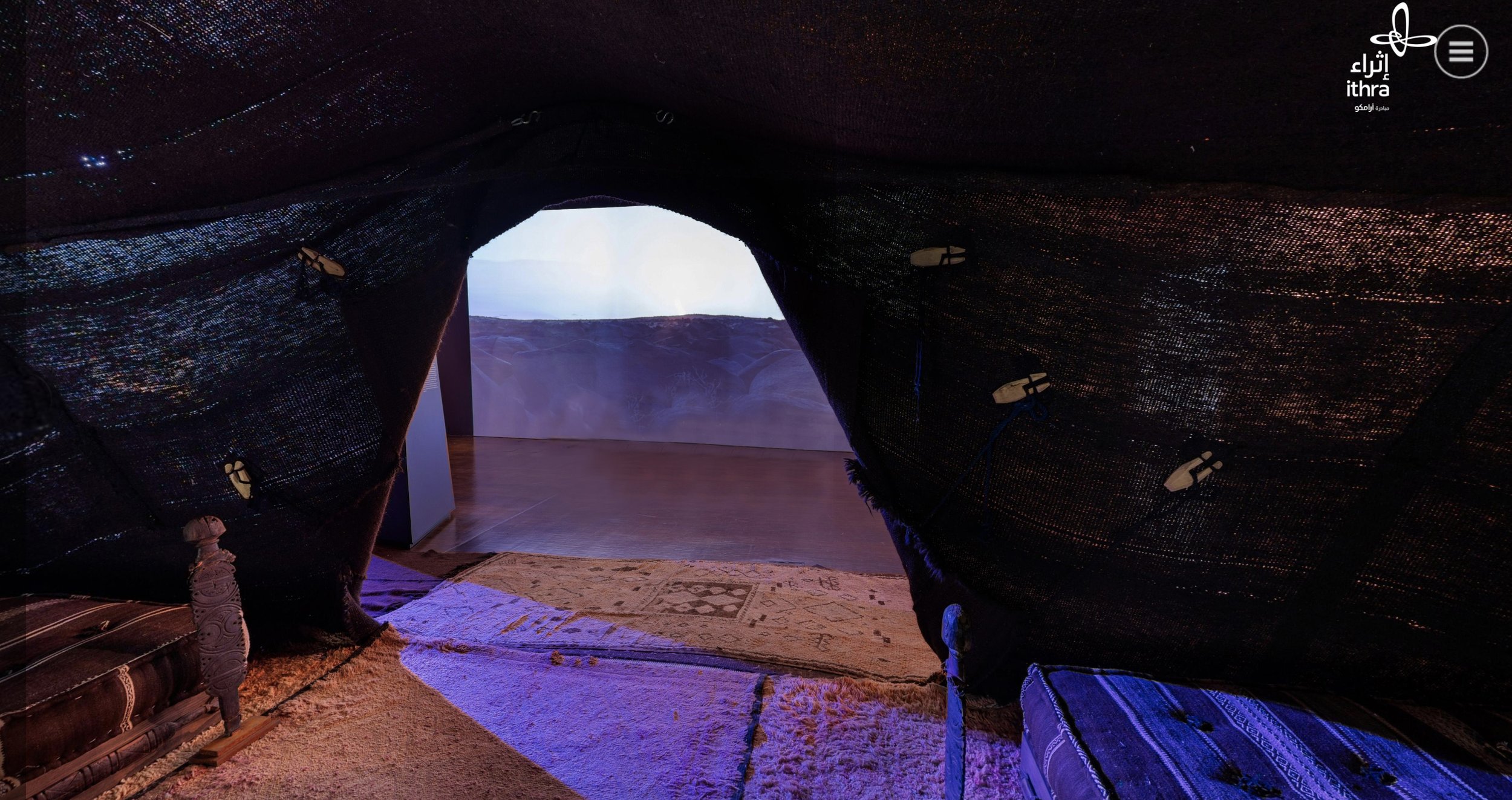The authenticity of Umm Ma’Bad’s Tent
Hijrah exhibition, King Abdulaziz Center for World Culture - Ithra - Dhahran.
Moroccan Berber Carpets (MBC) have produced a traditional camel hair tent installation in Bedouin tent style for the Hijrah Exhibition at the King Abdulaziz Center for World Culture - Ithra - Dharan. The Hijrah exhibition is a celebration of the prophet Mohammed’s journey from Medina to Mekkah - the most important historical islamic event and an inspiration journey that shaped the beginning of Islam. This installation was commissioned to authentically bring to life the setting of Ummu Ma’bad’s tent when she met the prophet Muhammad on his journey. This traditional camel hair tent was hand-woven by Berber women in Morocco using the ancient weaving techniques of desert women.
This Bedouin tent installation was designed, produced and installed by: Emma Joyston-Bechal and Samir Ait Ahmad of Morocco Retreats SARL - who create these bespoke traditional hand woven camel hair tents in Morocco, using the ancient Bedouin method.
The Hijrah exhibition is the first traveling exhibition of its kind out of Saudi Arabia. It’s set to be “exhibited across Saudi Arabia then globally during its five-year run” with the hope that it shares “new perspectives and findings on the story.”
Ummu Ma’bad lived nomadically during the time of the prophet Muhammad (around 622CE) and was an elderly woman during the time of Al Hijrah, Muhammad’s journey from Makkah to Madinah. As a part of this exhibition, she is noted for providing refuge at her tent for Muhammad, when he asked her to milk a goat that miraculously gave milk after not producing for some time.
Bedouin tent design and how it works
The exterior fabrics of these traditional Bedouin tents are made out of camel hair. The natural oils of the wool protect the tents from the rain and sun by stopping the wool from becoming brittle and breaking. This wool makes excellent strong rope and exterior fabric panels for camel hair tents.
The Khyma or Bedouin tent is an early rectangular hand spun cloth used as protection from the elements. Using poles these tents are easily erected and taken down for nomadic life and transportation by camel.
The ergo dynamics (Erg meaning dune) and the aerodynamics of these tents, means that they are perfect for high-wind and sand storms. The shape of these tents reflects their landscape and the desert dunes. When it rains the hand woven fabric expands to seal the tent from the water. When the sun is hot and dry the weave expands to let the tent breath and to provide ventilation within the tent.
The installation replicating Ummu Ma’bad’s tent on a larger scale gives you an idea of the tent environment where she met and conversed with the Prophet Muhammad. The interiors for this installation include flooring with vintage handwoven Berber carpets from Middle and High Atlas of Morocco, with custom built diwan seating, featuring ancient hand carved Bedouin tent pegs and cushions made from handwoven blankets. These interior materials are examples of some of the items and textures that would be inside a traditional camel hair tent of this kind.
Installing the Tent at the Hijrah Exhibit at Ithra
Press Coverage
https://www.ithra.com/en/special-programs/hijrah-exhibit
https://www.dailysabah.com/arts/events/saudi-arabian-exhibition-offers-immersive-look-into-hijrah
https://www.thenationalnews.com/arts-culture/art/2022/08/01/hijrah-exhibition-at-ithra-follows-prophet-mohammeds-migration-from-makkah-to-madinah/










